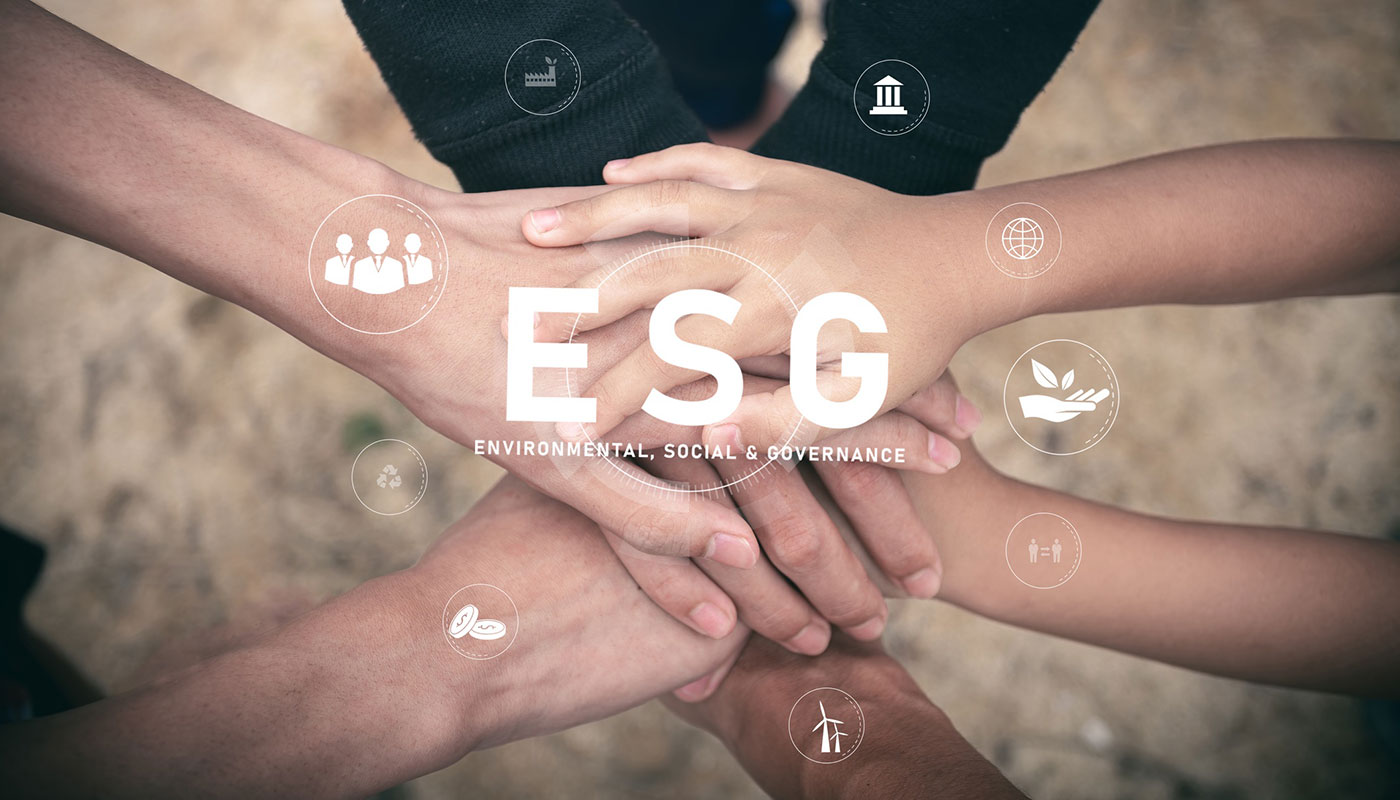
September 27, 2023
Packaging in the ESG Age
In today’s world, the focus on Environmental, Social, and Governance (ESG) factors has become paramount for businesses across all industries. Global packaging suppliers, as key players in the supply chain, are no exception to this paradigm shift.
As ESG principles continue to gain prominence, the luxury packaging industry is undergoing significant transformations. Growing concerns around sustainability and social responsibility are seeing industry stakeholders reevaluate practices and processes and adapt strategies to further align with ESG values – and to operate their businesses with greater sustainability, ethics, and accountability.
This guide explores a holistic view of best practices that can be adopted in the luxury packaging sector to navigate the age of ESG effectively:
ENVIRONMENTAL:
Luxury brands and their suppliers can demonstrate their commitment to environmental sustainability by consistently working to achieve the following sustainability practices in their packaging:
- Selection of Sustainable Materials and Substrates: Opting for eco-friendly and renewable materials and fitments in their pack designs. The ‘right’ choice of substrates and fitments, such as those made from recycled content, biodegradable, or compostable materials, significantly contribute to reducing the environmental impact of packaging.
- Responsible Sourcing: Recognising the importance of ensuring the raw materials are from environmentally and socially reliable sources. This means working in partnership with, and selecting, suppliers with strict environmental standards – those who prioritise sustainable harvesting or manufacturing methods and respect the rights and well-being of local communities and workers. Widely recognised, Forest Stewardship Council (FSC) certification, verifies that the paper and wood-based materials used in packaging come from responsibly managed forests and promote ethical practices.
- Design Efficiency: Embracing minimalist and lightweight luxury packaging designs to reduce material consumption and waste. Implementing design features and functionality such as flat-packable packaging (slimming down the pack to eliminate extra weight and be condensed for shipping) or creating products that encourage secondary use and discourage waste.
- Durability and Reusability: Ensuring the packaging is designed with durability and reusability (as above) in mind. High-quality materials and craftsmanship can also contribute to longer-lasting packaging, reducing wastage and the need for frequent replacements.
- Emissions and Transportation: Wherever possible, continually investigating and exploring more sustainable or carbon-neutral transportation methods. Leveraging intermodal transportation – i.e. different modes of transport like trucks, trains, ships, and planes, can lead to more efficient and cost-effective supply chains. Collaborating with other companies to share shipping space and resources can improve transportation capacity. Logistics partners can help packaging suppliers optimise routes, and enhance load efficiency. In minimising unnecessary detours and optimising delivery schedules, suppliers can significantly cut carbon emissions and freight costs.
- A Global Supply Network: A global supply network enables packaging suppliers to be more agile and responsive to market demands. This agility allows them to produce and distribute packaging more efficiently, reducing excess inventory and minimising waste. In several instances, ‘nearshoring’ production facilities closer to target markets significantly reduce transportation distances and associated costs. By leveraging resources, expertise, and opportunities across various regions, these suppliers can optimise their environmental impact, enhance social responsibility, and meet the growing demand for sustainable packaging solutions.
- Quality Control as a Cornerstone: Quality control is a vital aspect of sustainable manufacturing practices. Implementing rigorous material management and quality control measures and emphasising moves towards zero-defect manufacturing processes reduces the likelihood of defective luxury packaging items. This also minimises wastage during production, significantly reduces environmental impact, and improves resource efficiency.
Conducting a holistic analysis of the entire supply chain – from raw material sourcing to manufacturing process and final distribution can help identify emission hotspots that help target areas for improvement.
SOCIAL:
By embracing social responsibility and addressing the ethical implications associated with luxury packaging manufacturing and supply, packaging suppliers can foster a positive reputation, drive positive change in the industry, and contribute to the well-being of society and the planet.
- Worker Welfare and Employee Diversity: Ensuring a safe and healthy work environment for employees. Promoting diversity and inclusion within the workforce and fostering a culture of equality. Upholding diversity and inclusion within the packaging workforce, in line with ESG principles, ensures equal opportunities and representation of diverse backgrounds, enriching company culture and bolstering decision-making processes.
- Supply Chain Responsibility: Assessing and monitoring suppliers’ social and labour practices to ensure they align with the company’s values and standards, collaborating with suppliers to improve social conditions and sustainability throughout the supply chain. Collaborating with their manufacturers and supply chain partners helps monitor and improve compliance with labour regulations and workers’ rights.
- Community Engagement: Wherever possible, engaging with local communities where the company operates, supporting community development initiatives, and contributing positively to the communities by addressing their needs and concerns. Establishing initiatives that contribute positively to these communities fosters mutual respect and sustainable partnerships.
- Ethical Business Conduct: Adopting a strong code of ethics and communication policies to maintain integrity in all business dealings. Being transparent and accountable in business practices and reporting. Engaging with stakeholders, including customers, investors, employees, and communities, to understand their concerns and expectations.
- Health and Safety Impact: Minimising the health and safety impacts of products and packaging materials on end-users and consumers and promoting the proper disposal and recycling of packaging to reduce environmental and health hazards.
GOVERNANCE:
Effective governance can help brands and packaging suppliers navigate risks, seize opportunities, and build a reputation for ethical practices, attracting conscious partners, investors, and clients.
- Compliance with Laws and Regulations: A strong governance framework will ensure a company is aware of and complies with relevant laws and regulations regarding luxury packaging. Different industries often have specific requirements, such as health and safety regulations or labelling laws, which the packaging supplier must adhere to.
- Innovation and Research: Good governance supports investment in research and innovation to develop sustainable, future-forward packaging solutions and reduce the environmental impact of packaging products across various industries.
- Long-Term Value Creation: Strong governance fosters a long-term perspective focused on creating value for all partners over time. This may involve investing in sustainable practices and embracing circular economy principles.
- Regional Market Insights: Operating in different regions through a global supply network can provide valuable insights into regional preferences and regulations. Suppliers can adapt their packaging designs and materials to meet local sustainability needs and regulations.
Conclusion:
In the age of ESG, luxury packaging companies have the unique opportunity to lead by example, promoting sustainable luxury experiences that resonate with conscious brands and their consumers.
There are many external drivers and pressures from end-consumers and brand owners, but in truth, we all have a responsibility to the planet, wildlife, our children, and those who inherit what we leave behind. We are all aware of the greenwashing that is going on. Many companies truly want to do the right thing for business, and take it ‘personally’ – to do the best they can. Even the world’s biggest* company, Apple, has come to the party promising to bring its entire carbon footprint to net zero by 2030 — through innovations in materials, clean energy, low-carbon shipping, and restoring natural ecosystems.
Sustainability is not a destination but an ongoing commitment to do better, for our businesses and our planet. For us, we see it as a continual process of monitoring, measuring, learning, and improvement. By navigating sustainability through a holistic approach: thoughtful material choices, efficient designs, and responsible manufacturing and transportation processes, the luxury packaging sector can contribute to a more sustainable and socially responsible future.
For more information on packaging solutions or to gain insight into our latest packaging trends, follow us on LinkedIn, or join our community of packaging enthusiasts by signing up to our monthly newsletter below. Keep an eye on our news section for insightful articles and innovative ideas around packaging materials, product development and design.
*based on market cap as of September 2023.
More articles

March 22, 2021
Millimetres matter when it comes to packaging design

June 17, 2021
Great scents, greater social responsibility

January 25, 2023
Work Feature – Lambay 20 YO

October 5, 2020
Highland (Double) Gold for Tullibardine

January 27, 2021
Pantone announces colours of the year 2021

October 27, 2020
Tactile design elements may be as important as visual ones

June 5, 2024
Rosebank Whisky Blooms with Elegance

August 2, 2019


